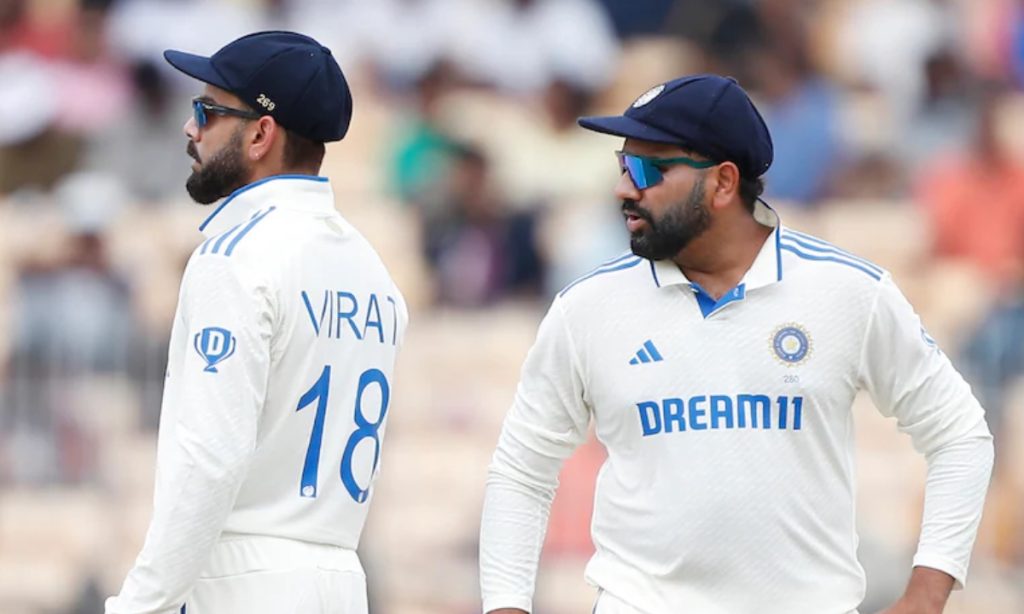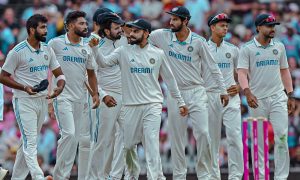The cricketing saga of Rohit Sharma and Virat Kohli has entered a phase where scrutiny on their Test cricket performances is more intense than ever. After the Australia vs. India 2024-25 series, questions about their readiness and form in the longest format of the game have become central to discussions in the cricketing world. An anonymous member from the Indian team management has shed light on a critical aspect that might be affecting their performance: the lack of consistent game time in Test cricket. According to a report by the Indian Express, the source emphasized, “Without game time in the middle, their game will stagnate… The switch from the red ball to the white ball is easy, but when it is the other way round, it is challenging. When you play Ranji games frequently, you will be in rhythm.” This statement highlights a fundamental issue in modern cricket scheduling and player management.
The Challenge of Format Transition
The transition between cricket formats has always been a topic of discussion among cricket analysts, but it’s particularly poignant for Rohit Sharma and Virat Kohli at this stage of their careers. The white-ball formats, with their fast-paced, aggressive gameplay, contrast sharply with the patience and endurance required in Test cricket. Rohit, who has often been lauded for his ability to play both aggressive and anchoring roles, faces the challenge of maintaining his rhythm in Test cricket, where the ball behaves differently, the conditions vary, and the mental game plays a significantly larger role. Kohli, known for his unmatched intensity and fitness, also grapples with this transition, where the lack of regular Test match exposure might be contributing to his recent inconsistencies.
Insights from Ravi Shastri
Ravi Shastri, who has seen both players up close during his tenure as India’s head coach, offered his perspective on Kohli’s career trajectory during an interview with The ICC Review. He drew parallels between Kohli and cricketing legends like Sachin Tendulkar and Brian Lara, suggesting that Kohli still has much to offer. “This now takes my mind back to [Sachin] Tendulkar, [and] to Brian Lara. When you evaluate their careers and see where Virat is, I think Virat still has it in him for the next couple of years to do precisely…..,” Shastri stated, indicating his belief in Kohli’s potential to continue contributing at the highest level. However, Shastri’s comments also carry an underlying message about the need for Kohli to adapt and perhaps rethink his approach to the game, especially in Test cricket.
Mentoring the Next Generation
Beyond their personal performances, Shastri emphasized another crucial role for Kohli and Sharma in the Indian team’s dressing room. “To get the youngsters coming through the ranks there. Help them out. Share knowledge. Be part of the dressing room. Contribute to the team,” he added. This aspect of their career could be as significant as their playing roles. Both Rohit and Kohli have built their careers on not just their cricketing skills but also their leadership and tactical nous. As they possibly enter the latter stages of their playing days, their role in mentoring young talents like Shubman Gill, Yashasvi Jaiswal, or any upcoming stars could be vital for India’s cricketing future.
The Path Forward for Indian Cricket
The Indian cricket board, selectors, and team management face a complex task in managing the careers of Rohit Sharma and Virat Kohli. Balancing their need for game time with the emergence of new talent, while ensuring the team remains competitive in all formats, requires strategic foresight. The suggestion to engage more in domestic cricket like the Ranji Trophy is not just about maintaining form but also about reconnecting with the grassroots of Indian cricket, which has historically produced many of the country’s cricketing greats.
In Summary
As the cricketing world watches, the narrative of Rohit Sharma and Virat Kohli in Test cricket continues to evolve. Their journey ahead will be shaped by how they manage the challenges of less frequent Test matches, adapt to the demands of different formats, and contribute to the growth of Indian cricket. Whether they can maintain their form, adapt, and mentor the next generation will not only define their legacy but also set the tone for how India approaches the Test format in the coming years. Their story is a testament to the complexities of modern cricket, where the balance between personal achievement and team legacy is ever so delicate.


